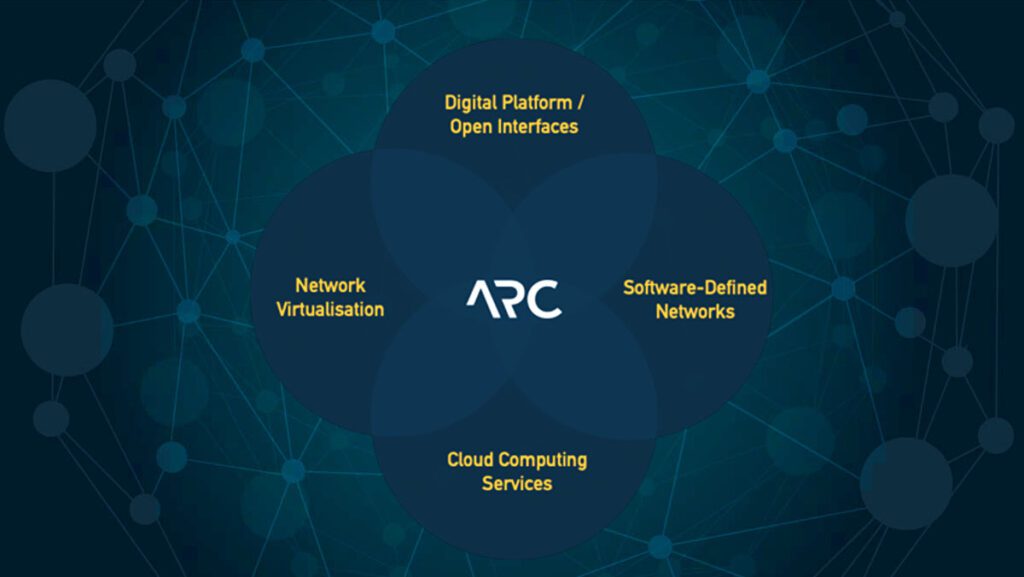
The Middle East has some of the most advanced and ambitious digital transformation initiatives in the world. It is recognized for leadership in smart cities, Internet of Things (IoT) and big data projects, yet infrastructure and connectivity models in the region still need to align to the demands of this transformation to power the accelerating cloud adoption.
Connectivity and infrastructure deployments inside the region are complex and involve managing numerous parties, navigating distinctive legal and regulatory frameworks, and aligning product and service characteristics.
In 2020, the global software-defined networking (SDN) market reached $8 billion in size. By 2027, that number is estimated to grow more than fivefold to a staggering $43.3 billion, according to Statista. Solid networking is crucial for accelerating cloud adoption in the Middle East – businesses just need the tools and expertise needed to take their transformation to the next level.
Cloud Complexities
Today cloud-centric businesses face an increasingly complex ICT ecosystem.
“Cloud computing” or “cloud” is simply the on-demand delivery of computing resource, but how that is applied within business operations is becoming increasingly diverse.
There are a growing number of cloud service providers (CSPs) to choose from in the region, offering different advantages for different applications. Multi-cloud strategies are being used by cloud-centric businesses to manage risk and optimise workloads while applications and services are being managed in both private and public cloud infrastructure. Multi-cloud strategies and hybrid infrastructure contribute to the need for simpler management models and agile network infrastructure.
This is all happening in a Middle Eastern market where network and data centre infrastructure are still to a large extent operating in national silos. Cloud-centric businesses need multiple vendor relationships to connect and deploy their applications and services across the region. It is resource-intensive to manage service providers and data centre operators in each market with varying quality of service and experience.
Cloud models are becoming more complex in a market where it is already challenging to integrate infrastructure across borders and roll-out cloud-based applications and services. For cloud adoption to grow, cloud-centric businesses need an infrastructure model that can serve their changing needs over time and remove the barriers to regional growth.
Moving Forward with Flexible Networking
For businesses to excel in the Middle East, and for cloud adoption to grow with the solid foundation, flexible networking models are vital.
The legacy networking model that was built to enable voice and messaging no longer matches the needs of cloud-centric businesses. The time has come to adopt new infrastructure models that will enable the long-term growth potential of cloud adoption in the Middle East. There needs to be a break from the past and a new focus on adopting infrastructure that mirrors the behaviors and characteristics of the cloud. That’s where SDN comes in.
An SDN platform can provide reliable, on-demand, intra-regional connectivity for carriers, enterprises and cloud and content providers. Using a single pane of glass for all customer and employee interactions, SDN enables the lowest possible human touch, the greatest degree of automation and highest degree of efficiency to digitally transform processes for customers.
Through the use of leading-edge software and network technology, an SDN platform can support innovative new products to scale quickly and effectively. It has the ability to deliver latency hyper-sensitive service types such as financial trading services, real time gaming and live TV broadcast and streaming, as well as secure services for government agencies and the financial services sector.
SDN can also offer modular architecture with open standard based interfaces. This enables workflows to be fully automated from prospect to cash, and with the use of standards-based APIs, full integration with a customer and partner portal can be easily achieved.
With fluid network models like SDN, the network can be continually evolving with new reach and capabilities. It makes the deployment and management of local and global connectivity seamless for carriers, as well as making it simple for hyperscalers to land and expand in the region with a suite of data centre and connectivity services.
It’s simple to add nodes in data centres across regions, so customers benefit from connectivity to fast-growing hubs across the globe. SDN makes it simple to go global from anywhere.
Cloudification
IT and telecommunications are no longer support functions for organisational efficiencies, they are the engines of innovation, growth and competitive advantage. Providers are increasingly evolving to provide integrated cloud solutions and services across the value chain to customers. Cloud technology is the foundation, and telecommunications the glue and an enabler for all other cogs in the business machine. Among the numerous benefits that cloudification has to offer, the most significant ones are on-demand, self-service, resource pooling, broad network access, measured service, and rapid elasticity. Cloudified products also overshadow on-premises solutions when it comes to flexibility, disaster recovery and reliability. Latency remains a challenge that is top of service providers’ criteria for deployment of their infrastructure.
Connectivity products aligned with cloud services offer speed and agility, which are key attributes to every enterprise’s needs in today’s digital world.

Innovation, Transformation and Growth
By adopting new infrastructure models like SDN, cloud-centric businesses can support the innovation, transformation and growth of the digital economy in the Middle East to enable and advance the region’s digital future.
Businesses can seamlessly enter new markets with the connectivity and data centre infrastructure in place to support them. At the same time, they can move more of their applications and services to the cloud, with greater freedom to choose partners, serve more users, and create efficiencies.
The Middle Eastern market is only going to become more complex and diverse. Cloud-centric businesses should choose an infrastructure provider that puts them in control. They need infrastructure that is ready to adapt, flex and scale to their needs as the market continues to evolve at a rapid pace. With SDN, cloud-centric businesses can benefit from new adaptability, responsiveness and agility if they take action today to serve the demands of tomorrow.
About Arc Solutions
Arc is a provider of integrated network solutions that simplify connectivity to networks, data centers, cloud and interconnect platforms across the Middle East. We put customers and partners in control of their connectivity and enable them to seamlessly and rapidly deploy connectivity solutions to serve their end-customers. Our purpose-built regional network and our interconnections to a large and expanding portfolio of partners and suppliers is designed so that we can quickly build the right solution for our customers.
As an independent provider with the backing from two of the most trusted telcos in the region, Batelco and EITC (du), Arc is led by a team of experts with a track record of success in serving regional and global businesses in the Middle East. Our vision is a highly interconnected Middle Eastern market that accelerates how network-centric businesses optimise, grow and innovate in connectivity and digital services..
We give you the edge in the Middle East.